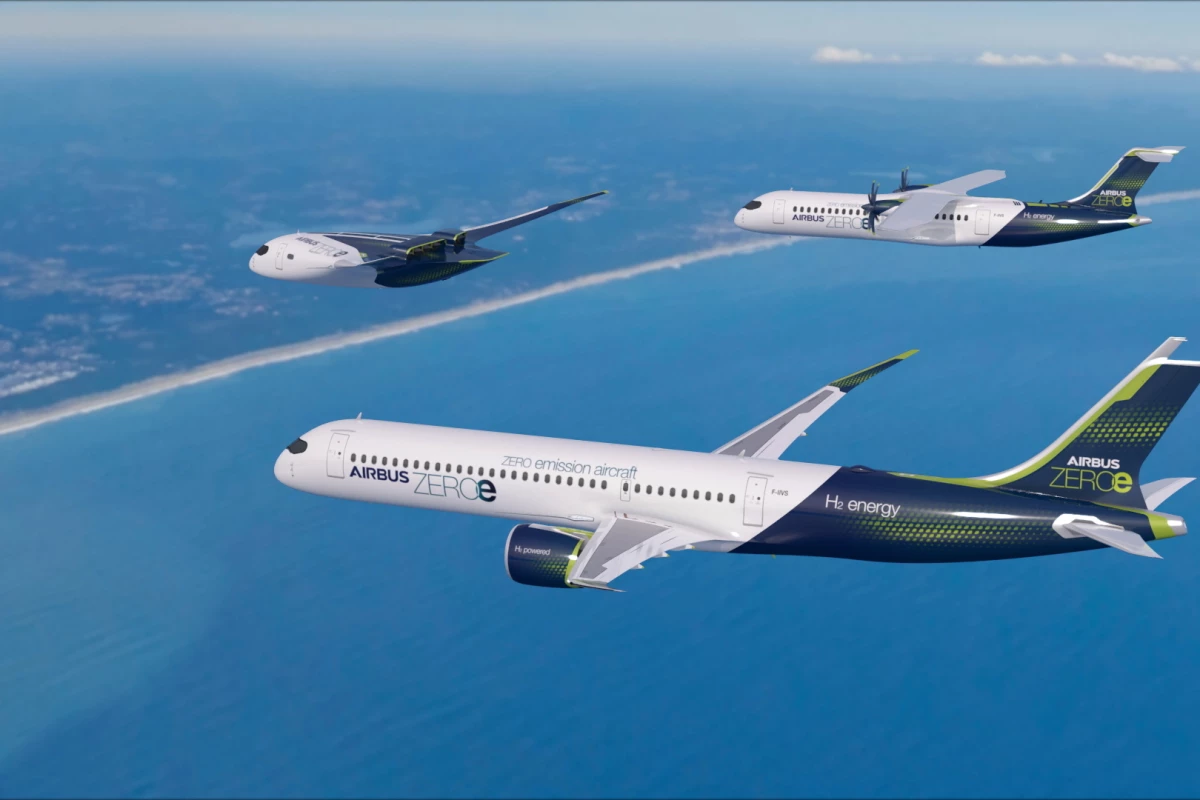According to a recent international study, aviation is responsible for 3.5 percent of all human activities that drive climate change. Airbus is looking to a cleaner future for the commercial aircraft industries, where hydrogen powers the (local) zero-emissions aircraft of tomorrow.
With today's reveal of three designs collectively known as the ZEROe concepts, the company is looking to be at the front of the effort to decarbonize the aviation industry, and it is aiming to bring the first hydrogen-fueled aircraft into service as soon as 2035.
"This is a historic moment for the commercial aviation sector as a whole and we intend to play a leading role in the most important transition this industry has ever seen," Airbus CEO Guillaume Faury said. "The concepts we unveil today offer the world a glimpse of our ambition to drive a bold vision for the future of zero-emission flight. I strongly believe that the use of hydrogen – both in synthetic fuels and as a primary power source for commercial aircraft – has the potential to significantly reduce aviation's climate impact."

At this stage, as you would expect, details are scant but we do know that one of the concepts is based around a turbofan design that's expected to have a range of over 2,000 nautical miles (2,300 mi/3,700 km) and will be capable of carrying between 120 and 200 passengers. Gas-turbine engines will be modified to run on liquid hydrogen instead of jet fuel, with the hydrogen stored in tanks located behind the rear pressure bulkhead.

Next up is a 100-passenger aircraft that will use turboprops instead of a turbofan design. Again, it will employ modified gas-turbine engines but is aimed at short hops, having an expected range of 1,000 nm (1,150 mi/1,852 km) or more.

The third concept offered up by Airbus is arguably the most visually striking. Designed to transport up to 200 passengers, this aircraft sports a "blended-wing body" that allows for numerous fuel storage and cabin layout configurations. It features a turbofan array to the rear, and is expected to be capable of flying over 2,000 nm.
Such environment-friendly flyers would certainly help to clean up our skies, but as we have noted previously, the production of hydrogen "can vary from the relatively green (electrolysis of fresh water using solar or wind-based energy) to the profoundly filthy (gasification of brown coal) – and the filthiest are by far the cheapest."
While there are promising signs for the production of clean, green hydrogen in the years ahead, Airbus also recognizes that new support infrastructures for an aviation industry fueled by hydrogen will be needed too – including scaling up hydrogen production, and investing in transport and refueling infrastructure.
"The transition to hydrogen, as the primary power source for these concept planes, will require decisive action from the entire aviation ecosystem," added Faury. "Together with the support from government and industrial partners we can rise up to this challenge to scale-up renewable energy and hydrogen for the sustainable future of the aviation industry."
Source: Airbus





